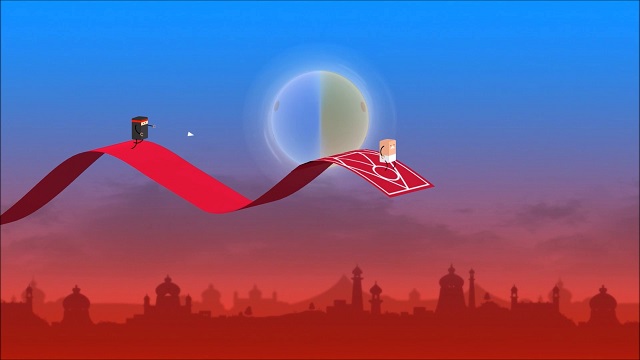Contrary to what people might think, Indians have been making video games since the late nineties. While the number of developers would have been a trickle in those days (you could count them in one hand), the number today reaches at least in the hundreds; and this is without counting the one-person, indie-developers, sitting in their parent’s houses and pontificating how they can ‘make the most kickass game an Indian has ever made, oye!’. My estimate of those types of developers would be in the thousands.
The reason for this explosion of developers, trained or untrained, is because of the times we live in. Today, it’s really easy to just pick up a computer and build a game. Programming is being taught in schools, art and artists are available on the internet and game development software is available for free. But most importantly, all of this leads to the largest avenue to sell games directly to consumers… the current smartphone App Stores. Because of this easy access to development and sales channels, there are thousands of developers sitting at home developing games unwisely thinking they can strike it rich.
Well, it’s not that simple!
But hey, isn’t Candy Crush making like a million dollars a day?
Yes, but the problem now is that you’re playing in their field, which means you need to play by their rules, and the current rules are dictated by the consumers who demand everything for free.
So what? Candy Crush is free!
Well, yes, yes it is! Candy Crush is free… Free-To-Play! But the art and science of building a successful Free-To-Play game is like striking it rich on the stock market where to be successful you need a bevy of quantitative analysts doing number crunching, since it’s as much about the data as it is about understanding the business.

So are we all doomed?
Absolutely Not! Since there is no better time than now to be able to make the games that developers have wanted to make and get them in front of an audience, the concentration should be exactly that, to make the games; and the first part of making the games is thinking about the game and not the business model.
It’s no secret that game developers in India have a long way to go to build games at the level of international standards, but we’ve also come a long way from where we’ve started. A lot of market and ecosystem factors have contributed to this; most notably the rise of indie games worldwide in the past seven years, their universal accessibility through the internet, and the tools available for anyone to be able to create them. These indie games are now available on every gaming platform; whether it’s the mobile phone, the PC or any of the consoles; and so we’ve seen a lot of International Indie game creators create Premium games that are, more or less, platform agnostic.
Some of the successes of last year include games like Her Story, Leo’s Fortune, 80 Days, Tales from the Borderlands, Transistor etc. These are examples of games that are inherently Premium games but easily platform agnostic, and their developers have brought them to every gaming platform possible. In doing so, the App Stores are just another avenue to sell their games and not just the easiest one available. Even Apple acknowledged the continuing existence of quality premium games by creating the “Pay Once & Play” section, which featured only Premium games. Just casually browsing through that section we can see that at least half of those games have been ported to the mobile from other platforms. Now, there have also been a handful of premium games being made specifically for mobile phones which don’t port to other platforms easily, but these are extraordinary titles and generally exceptions to the rule. Device 6, A Sailor’s Dream and Monument Valley come to mind, and these are very specific to mobile only.
Of the Indian developers, this year we’ve seen some of them take the cues of these Indies and try to replicate it, but it’s too early to tell if they will be successful as yet. We’ve definitely seen some bold experiments with games like Stay, Mum and last year’s Unrest and the upcoming Asura, Good Robot and Sky Sutra, and only time will tell if they’ve achieved what they set out to do.
So are premium games the way to go for Indian Indies?
Well, it depends. Developers should just concentrate on creating the best game experience that they can; and once they know they can do that, only then should they move onto thinking about layering a business model over it. For Indian developers, if they can create an outstanding, standalone premium game, which is good enough to be picked up by any international publisher across multiple platforms, then they are more likely to have a successful hit with this premium game (even on the App Stores) than they are likely to have with a free-to-play game.

(These are purely personal views of Photon Tadpole, CEO and founder, Hrishi Oberoi and AnimationXpress.com does not necessarily subscribe to these views)

